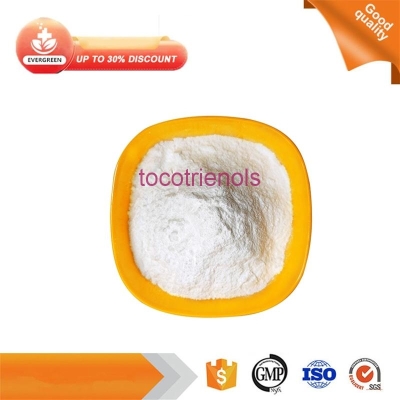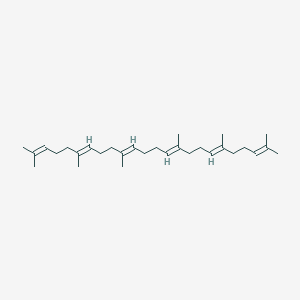-
Categories
-
Pharmaceutical Intermediates
-
Active Pharmaceutical Ingredients
-
Food Additives
- Industrial Coatings
- Agrochemicals
- Dyes and Pigments
- Surfactant
- Flavors and Fragrances
- Chemical Reagents
- Catalyst and Auxiliary
- Natural Products
- Inorganic Chemistry
-
Organic Chemistry
-
Biochemical Engineering
- Analytical Chemistry
- Cosmetic Ingredient
-
Pharmaceutical Intermediates
Promotion
ECHEMI Mall
Wholesale
Weekly Price
Exhibition
News
-
Trade Service
Preface
Vorinostat, the English name of Vorinostat, the trade name of Zolinza®, and the chemical name of Suberoylanilide hydroxamic acid (SAHA), were approved by the US FDA on October 26, 2006
.
It is used to treat T-cell lymphoma (CTCL, a type of non-Hodgkin's lymphoma) that worsens, persists, and recurs or is ineffective after treatment with two systemic drugs
darkness before dawn
As early as 1971, someone discovered that a solution containing dimethyl sulfoxide (DMSO) had the ability to convert murine erythroleukemia cells into red blood cells; by 1975, someone discovered that certain nitrogen-containing compounds have stronger activity than DMSO , Measured the dipole moments of these compounds and found that they have common characteristics: the greater the dipole moment, the greater the polarity, and the stronger their activity
.
With this discovery, researchers synthesized the compound hexamethylene bisacetamide (HMBA) in 1976.
Later, clinical trials were conducted on the compound, but in phase II clinical trials, it was found that it can only relieve the symptoms of myelodysplastic syndrome and acute myelogenous leukemia, and patients have low tolerance to the drug, and the drug is in the body.
The metabolic half-life is only 1.
5 hours, and it is difficult to explain that the compound is effective against diseases.
Therefore, unfortunately, the clinical trial of HMBA failed
.
The dawn of success
The significance of failure is to accumulate experience for success.
Although HMBA has not become a new drug, it provides a relationship between structure and activity for more active compounds
.
The target of HMBA is not yet clear, and blindly synthesizing new compounds may go the same way
It is worth noting that the molecular formulas of SAHA and HMBA both contain 6 methylene groups, indicating that these 6 methylene groups are indispensable in this class of compounds
.
Later, the researchers synthesized the compound HASA, which is 6 times more active than SBHA
Explore the relationship between drugs and targets
It was found that Trichostatin A (TSA) in Streptomyces coelicolor can inhibit histone deacetylase.
As TSA and SAHA have similar structures, SAHA may also have similar effects
.
After experiments, it is concluded that HDAC is the target of SAHA.
In order to verify that SAHA is combined with HDAC, the researchers demonstrated this through X-ray experiments.
In the figure below, we can see that there is a narrow hydrophobic pocket containing Zn2+ in HDAC, and the hydroxamic acid group of SAHA and The ions are firmly bound together, the 6 methylene groups extend out through a narrow pocket, and the benzene ring is attached to the surface of the hydrophobic HDAC homologous protein
.
Successful trial
In vitro test results showed that SAHA inhibited HDAC at a dose of 50 nM, and caused cell growth arrest and cysteine protease-dependent apoptosis
.
In animal experiments, SAHA effectively inhibits tumor growth in mice and rats, can treat mouse models of drug-resistant acute promyelocytic leukemia, and is effective in mice with lung cancer with almost no adverse reactions
In phase I clinical trials, SAHA showed extensive anti-tumor activity, and as an oral drug, it is extremely convenient for patients to use
.
SAHA is effective against a variety of blood cancers (including Hodgkin's disease, non-Hodgkin's lymphoma, T cell lymphoma) and a variety of solid tumors (including thyroid tumor, kidney cancer, laryngeal cancer, etc.
In a phase II clinical study, it was found that SAHA has a significant therapeutic effect on T-cell lymphoma and can be used in patients who have failed previous medications
.
The patient’s tumor cells were cultured in vitro, and it was found that SAHA selectively induces malignant T cell apoptosis and regulates the level of histone acetylation
to sum up
Although Vorinostat has only a moderate inhibitory effect, and the hydroxamic acid group in it also has certain toxicity, HDAC is widely present in chromatin, and the use of Vorinostat may cause adverse reactions in the body
.
However, as the first HDAC inhibitor, it has achieved a leap from DMSO to drug, providing a model for the development of stronger and safer HDAC inhibitors in the future
.
Reference materials:
1.
Hemoglobin Synthesis in Murine Virus-Induced Leukemic Cells In Vitro: Stimulation of Erythroid Differentiation by Dimethyl Sulfoxide.
2.
A new group of potent inducers of differentiation in murine erythroleukemia cells.
3.
Potent and Specific Inhibition of Mammalian Histone Deacetylase Both in Vivo and in Vitro by Trichostatin A.
4.
Dimethyl sulfoxide to vorinostat: development of this histone deacetylase inhibitor as an anticancer drug.
5.
Second generation hybrid polar compounds are potent inducers of transformed cell differentiation.







